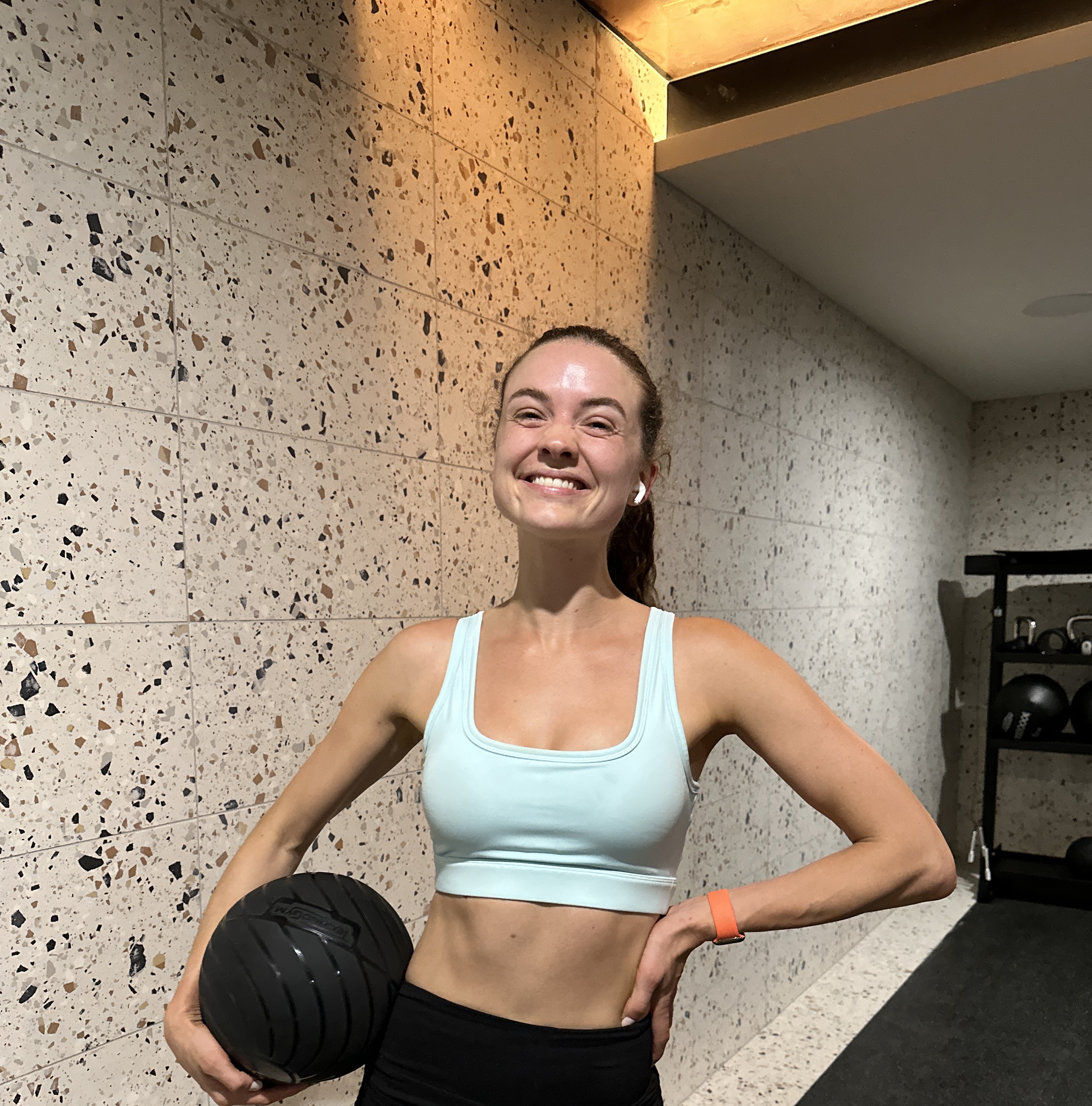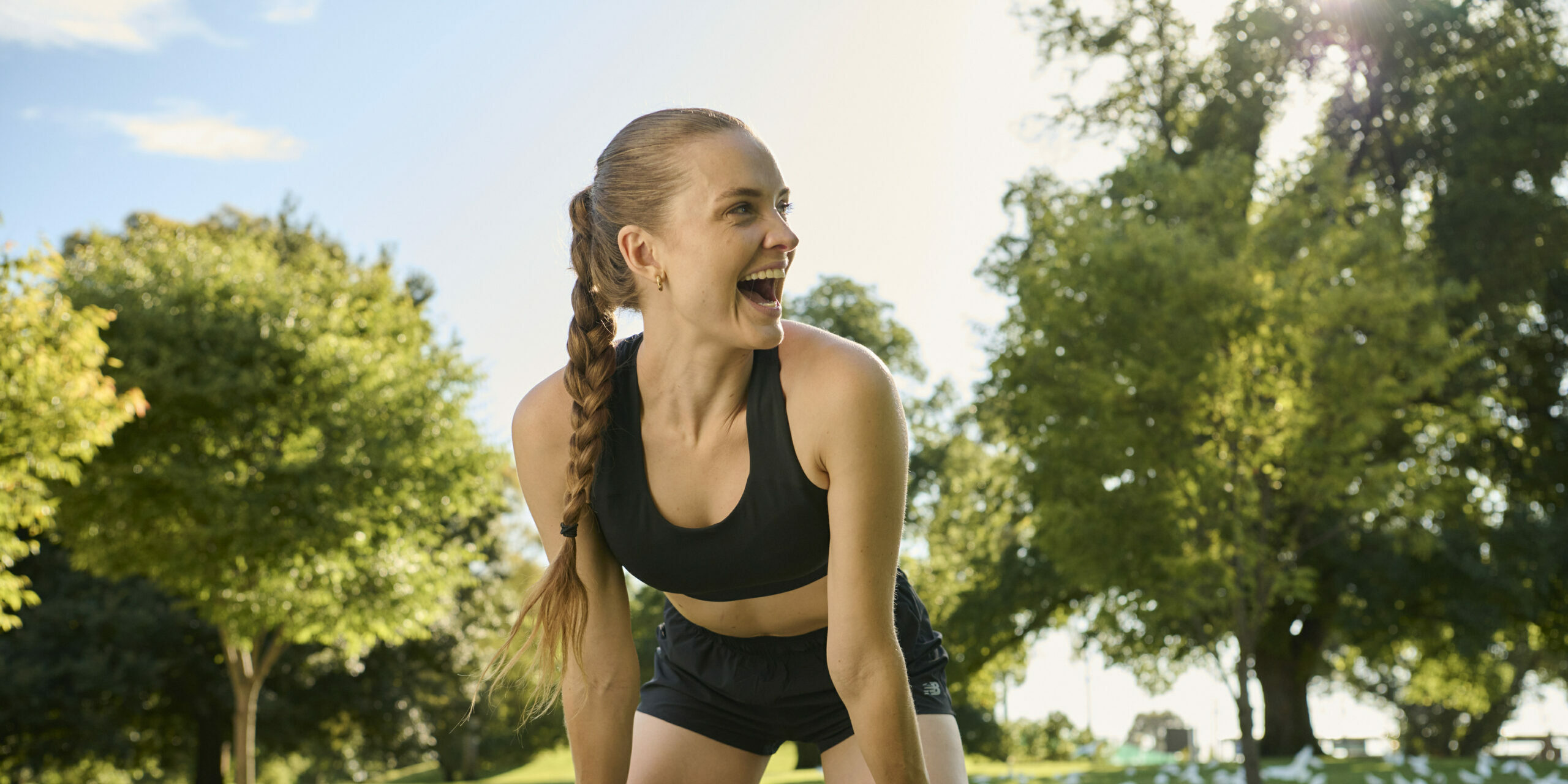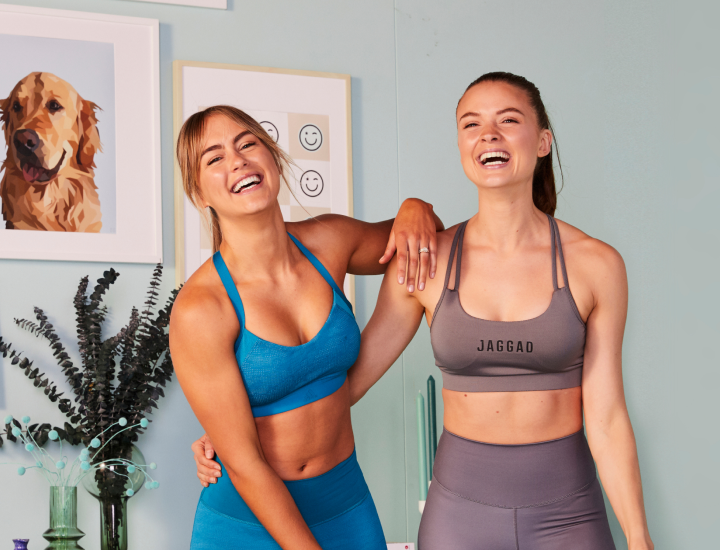Shop the New Balance Fresh Foam X 1080v13 now
Get ready to run your way.
You’re mid-run and that uncomfortable, crampy feeling pinches your abdominal area wraps around your body. Sound familiar? What about other common pain points like sore knees, achy shins or general body stiffness?
None of these things are very pleasant, but they are preventable. We’ve worked with our team of physiotherapists from Upwell Health Collective to share some of their top tips to help relieve us of these niggles, and the good news is, a lot of the time they can be managed at home.
Here’s Jaclyn Murphy from Upwell Health Collective!
If you love to run or have ever tried to get into running, it is likely that at some point you have been deterred by a very common running complaint.
In many cases, a lot of niggles and minor discomforts can be managed yourself at home by following these simple steps below, however if any pain or discomfort persists it is important that you see a physiotherapist or an accredited health professional as soon as possible for the best management.
Some of the most common niggles, regardless of whether you’re just starting to run or if you’re a seasoned runner, are things like stitches, sore knees, achy shins or general body stiffness.
How to prevent running stitch
There can be a number of reasons for a stitch including dehydration, consuming the wrong liquids prior to running or even increased strain on the diaphragm associated with the impact of running.
Depending on the cause of your stitch, slowing down your running pace or taking a walking break and stretching out the abdominal muscles, by reaching above your head and taking several deep breaths can alleviate the symptoms.
Additionally, remember to drink the right amount, as well as the right type of fluid before running. Drinking water or consuming electrolytes before starting a run should help to reduce the likelihood of having a stitch.
Why are my knees sore from running?
Often, if you’re new to running, there is an increase in load and impact on the knees. A single cause could be tight quadricep, glute or hamstring muscles.
Foam rolling your quadriceps, glutes and hamstrings can be helpful in reducing the overall load on these muscles and therefore reduce the niggles that can occur in your knees.
Not having enough strength in our leg muscles can be another cause of knee pain associated with running.
When we run, we often develop aerobic capacity and fitness quicker than what we are able to build strength, so it is important to keep building strength while you are increasing your running load.
Incorporating some strength or Pilates workouts into your routine can reduce your risk of knee pain with running.
How to fix shin splints
Shin splints is often a loose term used to describe exercise related pain that develops along the shinbone.
Factually, shin splints refers to the tenderness, swelling and pain along the inner side of the shin bone and is also known as medial tibial stress syndrome (MTSS). MTSS should be managed by a podiatrist or physiotherapist and can lead to stress fractures if not managed properly.
However, if you are experiencing mild, non-persistent shin pain; stretching and foam rolling of the calves can help reduce symptoms of shin splint type pain.
Likewise, backing off your running load and adding in 2-3 rest days a week can reduce the likelihood of developing shin splint symptoms.
Why is my body stiff after running?
Like any other form of exercise, running can lead to feelings of general body stiffness and tightness in muscles and joints. To reduce whole body stiffness it is important to include rest days or lower intensity exercise days such as yoga or walking in your week to ensure adequate recovery post run.
Although it sounds like it might be counterproductive, mixing up your week with 2-3 strength training sessions can help to build up the muscle groups we use to run and reduce overall feelings of tightness.
Lastly, spending a couple of minutes after your run foam rolling your glutes, hips, quadriceps, hamstrings, calves and back can help to reduce overall general feelings of stiffness in the body and promote blood and oxygen flow to those working muscles.
What shoes should I wear to help prevent injury?
It is so important to make sure you have a good pair of running shoes that fit you well and are supportive for running. Having the right footwear can help with injury prevention and improve your running performance, win! The shape of your foot, and how it moves when you walk/run, will determine the shoe that will best suit you. So, it’s best to get yourself fitted to find the right shoe for you!
Want to know what we’ve been loving lately? The New Balance Fresh Foam 1080v13.
What makes the 1080 unique isn’t just that it’s the best running shoe New Balance makes, it’s also the most versatile. Whether you’re just starting out or ready to run further, the 1080 delivers top-of-the-line performance to every kind of runner. The Fresh Foam X 1080v13 is available in a brand new colourway and it’s safe to say that we are OBSESSED!
New to Kic? You can get started with our 7 Day Free Trial today!

Ever wondered why so many people LOVE to run? Well, there’s a pretty simple answer – runner’s high! But what actually is it and how do you get it?

Ever wondered about the true health benefits of High Intensity Interval Training (HIIT), or why we feel SO good after a seriously sweaty session? The experts at Upwell Health Collective are here to explain!

Ever gone for a run and felt like your breath just can’t keep up? You’re gasping for air and just can’t keep your breath steady. We hear you! To find out more about how to breathe properly whilst we run, we chatted to Kic’s Physio Ashleigh Ormond, with our questions!
